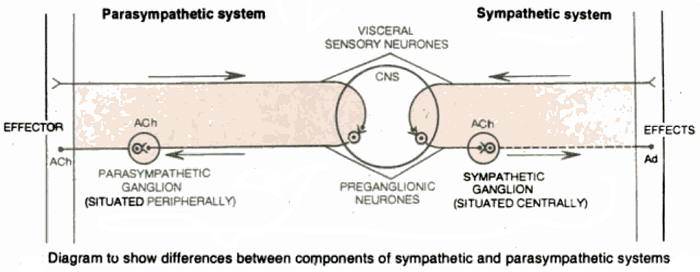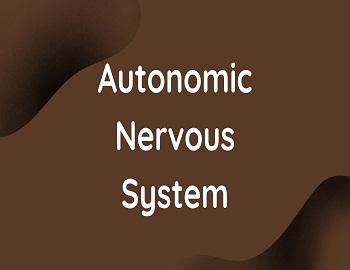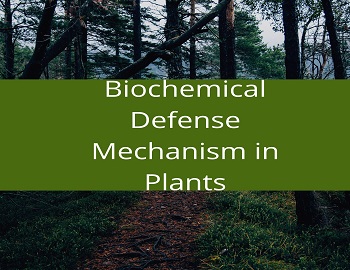Table of Contents
Autonomic Nervous System:
The Autonomic Nervous system is also called the vegetative nervous system or visceral nervous system. It consists of a special set of peripheral nerves that innervate organs like the heart, lungs, digestive tract and other visceral organs and perform a variety of functions that are not under the control of the will. As a matter of fact, the activities of all visceral organs are coordinated through the regulation of their smooth muscles and glands by the nerve fibres of the autonomic nervous system.
Some of the motor nerve fibres which emerge from the central nervous system enter the autonomic ganglia. These ganglia are swollen and bulbous structures containing the cell bodies of many neurons. The nerve fibres that enter the autonomic ganglia are called preganglionic fibres. These fibres terminate by synapsing with the nerve cells in the autonomic ganglia. The axons of these ganglia emerge as postganglionic fibres and supply smooth muscles and glands. These preganglionic and postganglionic fibres and autonomic ganglia together constitute the autonomic nervous system. Postganglionic fibres conduct impulses to smooth muscles and glands only when the central nervous system sends impulses through the preganglionic fibres. The autonomic nervous system is regulated by the high nerve centre of the brain.
Both, structurally as well as functionally, the autonomic nervous system is divided into sympathetic and parasympathetic nervous systems. Both the system have their own sets of pre and postganglionic fibres and ganglia. The two systems are, however, antagonistic, because the nerves of one system have just the opposite effect on the body.
Sympathetic Nervous System:
The sympathetic nervous system consists of sympathetic chains, preganglionic sympathetic fibres, collateral ganglia, and postganglionic sympathetic fibres. The sympathetic nervous system is also called thoracolumbar outflow because its preganglionic fibres join the spinal cord only in the thoracic and lumbar regions.
(1) Sympathetic Chains- They have paired chains of 21 ganglia which extend from the upper cervical level to the sacrum. There are 3 cervical, 12 thoracic, 5 lumbar and 1 sacral chain ganglia. The chain ganglia contain cell bodies of many neurons and are connected serially by nerve fibres extending between them in the trunk.
(2) Preganglionic Sympathetic Fibres- These are small-sized axons of neurons present in the lateral funiculus of the spinal cord. These form synapses with dendrons of neurons present in all the thoracic and upper three lumbar chain ganglia. These are often referred to as thoracolumbar outflow.
(3) Collateral Ganglia or Pre-vertebral Ganglia- There are three collateral ganglia situated in the abdominal cavity close to the origins of arteries of the same names. These are coeliac ganglion, superior mesenteric ganglion and inferior mesenteric ganglion.
(4) Postganglionic Sympathetic Fibres- These are long-sized axons of the neurons of chain ganglia. These supply the smooth muscles and glands of visceral organs like the heart, ciliary muscles and iris of eyes, lungs, liver, gut, urinary and reproductive systems.
In an emergency, both the sympathetic nervous system and adrenal glands work together as an integrated unit called the sympathetico-adrenal system. Cranial nerves have no role to play in the sympathetic nervous system.
Functions of Sympathetic Nervous System:
- It coordinates the activities of a number of body organs.
- It controls the activities of adrenal glands for meeting an emergency or emotional stress through increased heart beat/blood pressure.
- Constriction of peripheral blood vessels with dilation of blood vessels supplying organs connected with meeting emergency.
- Temporary decrease in peristalsis.
- Relaxation of urinary bladder.
- Dilation of pupil.
- Reduced secretion of saliva and digestive juices.
- Erection of hair in emergency.
- Increased secretion of sweat galnds etc.
Parasympathetic Nervous System:
The parasympathetic nervous system originates in the brain (midbrain or brainstem) and from the lower region of the spinal cord. The emerging nerves form a craniosacral outflow. The parasympathetic nervous system comprises of three components preganglionic parasympathetic fibres, parasympathetic ganglia and postganglionic parasympathetic fibres.
(1) Preganglionic Parasympathetic Fibres- These are long-sized axons of neurons present in the midbrain, brain stem and lateral columns (funiculus) of the sacral part of the spinal cord. These come out along with oculomotor (III), facial (VII), glossopharyngeal (IX) and Vagus (X) nerves, whereas those from the spinal cord pass along with the sacral spinal nerves II, III and IV. The preganglionic nerve fibres are referred to as craniosacral outflow. These form synapses with neurons of the parasympathetic ganglia.
(2) Parasympathetic Ganglia- These are groups of nerve cells present either near or within the viscera. They are not joined together to form a chain. Preganglionic sympathetic fibres synapse with the neurons in the parasympathetic ganglia.
(3) Postganglionic Parasympathetic Fibres- These are small-sized axons of neurons of parasympathetic ganglia and supply the smooth muscles and glands of the visceral organs.
Postganglionic parasympathetic fibres release acetylcholine at their nerve endings. So these are cholinergic.
Functions of Parasympathetic Nervous System:
It controls those activities which conserve energy. These are-
- Slowing down the rate of heart beat.
- It reduces the blood pressure.
- It dilates peripheral blood vessels, however, constricting others to reduce blood supply.
- It increases the peristalsis in intestine.
- It helps in excretion process.
- Constricting pupil and bronchioles.
- Promoting salivation and secretion of digestive glands.
The autonomic nervous system (ANS) is not autonomous. Though the sympathetic and parasympathetic nervous systems of ANS control the involuntary visceral organs like heart, gut, lungs, kidneys, urinogenital organs and their ducts, etc. both are controlled by higher nerve centres of the brain. These centres sent the impulses to ANS through preganglionic nerve fibres which transmit them to visceral organs. So, autonomic ganglia act as only relay centres. The preganglionic nerve fibres of both the sympathetic and parasympathetic nervous systems are cholinergic.










Comments (No)